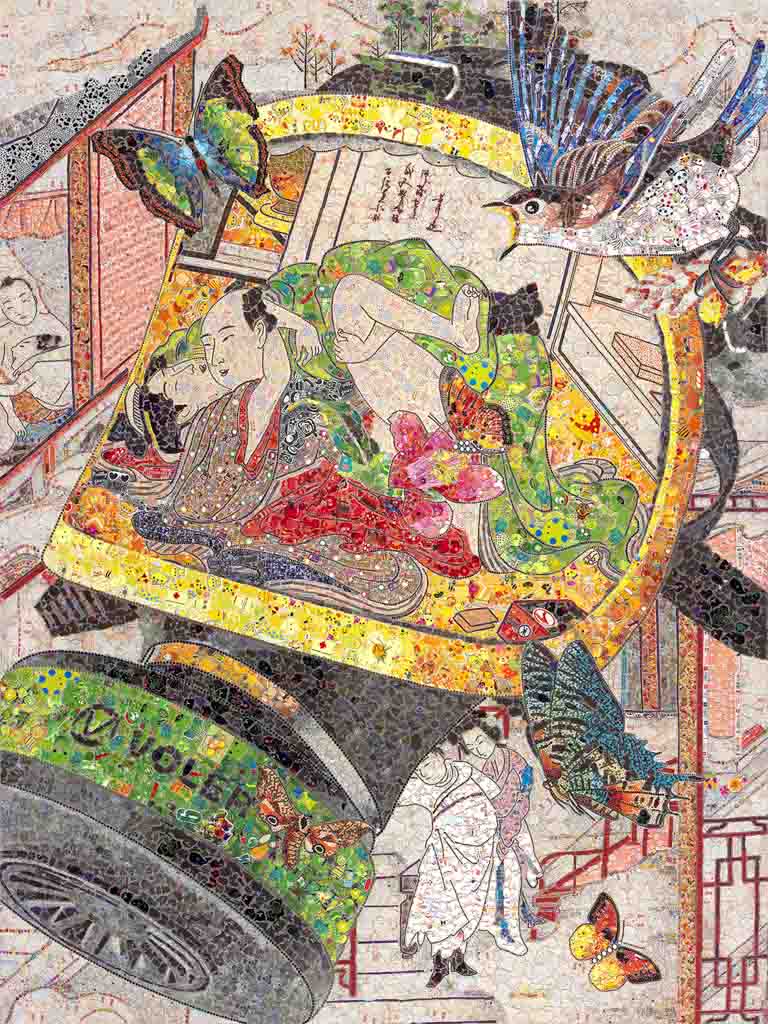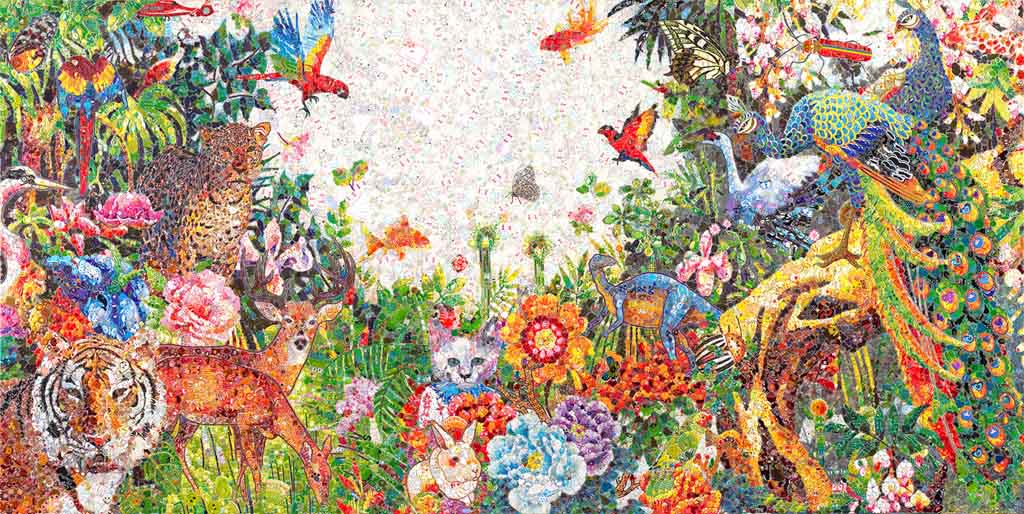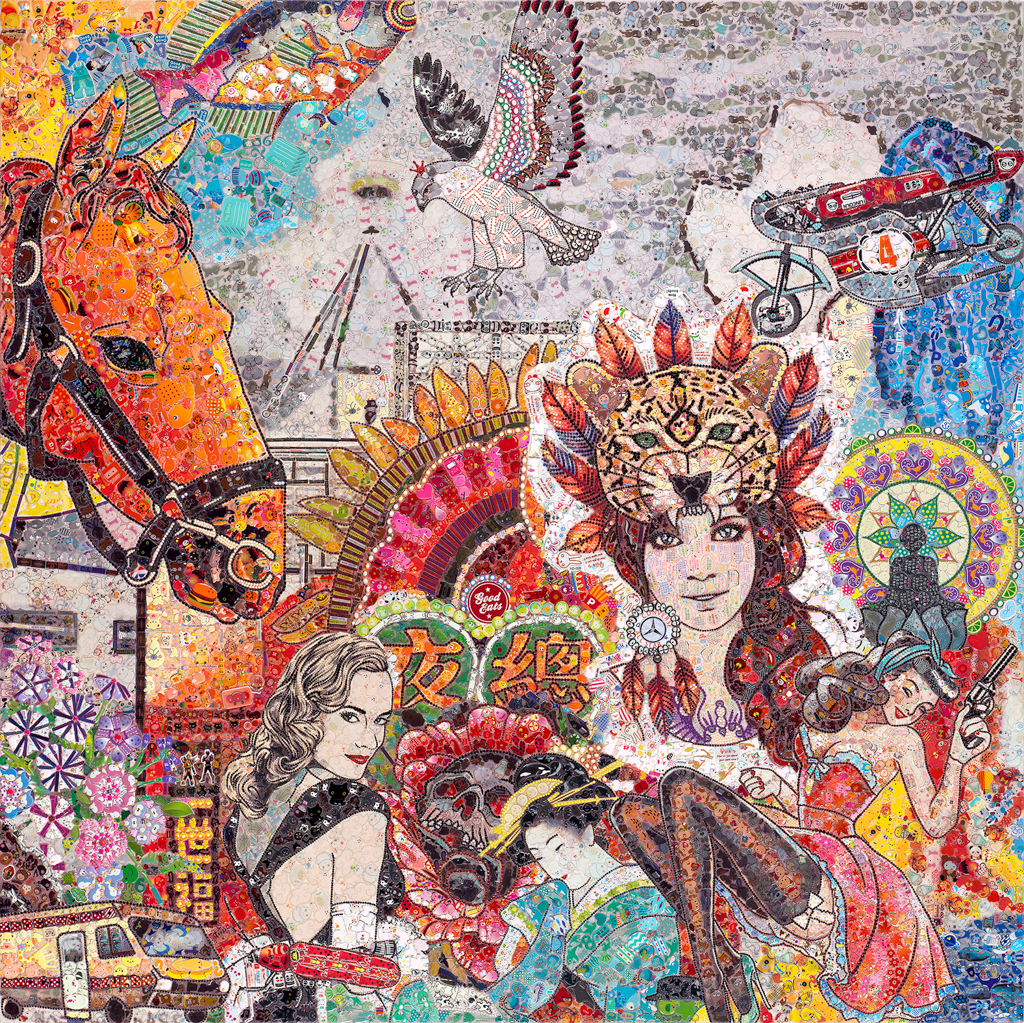The concept of pointless accumulation is central to Ye Hongxing’s art. Her work reflects a rapidly changing society in China, torn between its ancestral traditions and culture, and its new consumerist way of life.
“I want my work to arouse profound thinking about reality and the world that we are living in, also to expand people’s imagination so that they won’t keep accepting information passively,” she tells me when I ask what message she wants to convey with her art.
Ye Hongxing was born in Guangxi Province in 1972 and graduated with a Master of Art from the prestigious Central Academy of Fine Art in Beijing. She has held numerous solo and group exhibitions around the world, her fusion of traditional Chinese motifs and modern elements questioning the direction China is taking both as individuals and society as a whole.
It could be argued that Ye Hongxing’s artwork is a commentary on excessive consumption in Chinese culture. “With the fast development of China’s social economy, the demand for productivity is growing, and the information is overloading,” she suggests. “It brings a sense of crisis and bewilderment to the contemporaries. This has been the theme of my works.”
Her work consists of both paintings and sculptures. “I work with multiple mediums, including painting, sculpture, installation, etc.,” she explains. “I don’t want to confine myself to a certain material. Instead, I choose different ways of expression according to different themes that I want to convey to the audience.”
Indeed, her oeuvre is broad, with her use of materials like propylene, metals, stones, and industrial ready-made products such as cartoon stickers, sticky notes, and little toys capturing the essence of made in China. “I like to go to local markets and fairs to look for various kinds of interesting materials, such as stickers, toys, and beads. There is no rule in looking for such materials. I follow my feelings.”
She continues, “For example, I think stickers correspond to the theme of my works because they are in fragments, extremely colourful with an abundance of symbols. We are people from different countries with different cultural backgrounds, and we can always find a point of interest and provide different interpretations.” By using ready-made objects she falls into the art of Duchamp, her use of small items made en masse in China a metaphorical symbol of China’s excessive consumption culture.
Ye Hongxing has a wonderful way of making concrete yet abstract images. Her style is highly recognisable and memorable, giving her a specific visual language. Her art is a kaleidoscope of images and symbols, i.e. an infinite combination of images, with a finite number of elements. Her use of cartoon images, animals, vegetation, skeletons, and naked girls, as well as badges and signs in her art, centres her visual language around the creation of something new by the simple rearrangement of what existed before.
“My work is based on the issue that I focus on or pay attention to at that moment, such as the conflicts and fusions of human existence and the environment, fashion and contemporary art, primitive and modern, natural and artificial, strength and weakness,” she says with a certain clarity that is refreshing. “With various elements mixed in one piece of work, I can build a picture that is open, uncertain, psychedelic, and multi-layered. It is a portrayal of reality.”
It has been said that her art falls into the category of neo-abstractionism. Does she agree? “Some of my works, for example, ‘The Accumulation of Silence’, has the conceptual features of new abstract art because the form is abstract, the structure is rational and well ordered, and the picture is planar. Maybe that’s why they are called neo-abstractionism.” Again this clarity and understanding of her style are what makes her art so recognisable. Neo-abstractionism is more modern in its meaning than abstract art and is, therefore, more inclusive in its use of materials and more flexible in its mindset and expression.
It could be said that we are now living in a golden age of Chinese artists. “China is a country with a long history and unique oriental culture. It seems that the Western and the Eastern cultures collide more deeply here. The collision has influences on everyone,” she muses. Ye Hongxing has grown up amid this collision of cultures, her Chinese mid-century imagery, pop culture symbols, as well as original mantras combining something metaphysical and concrete in one artistic space.





















